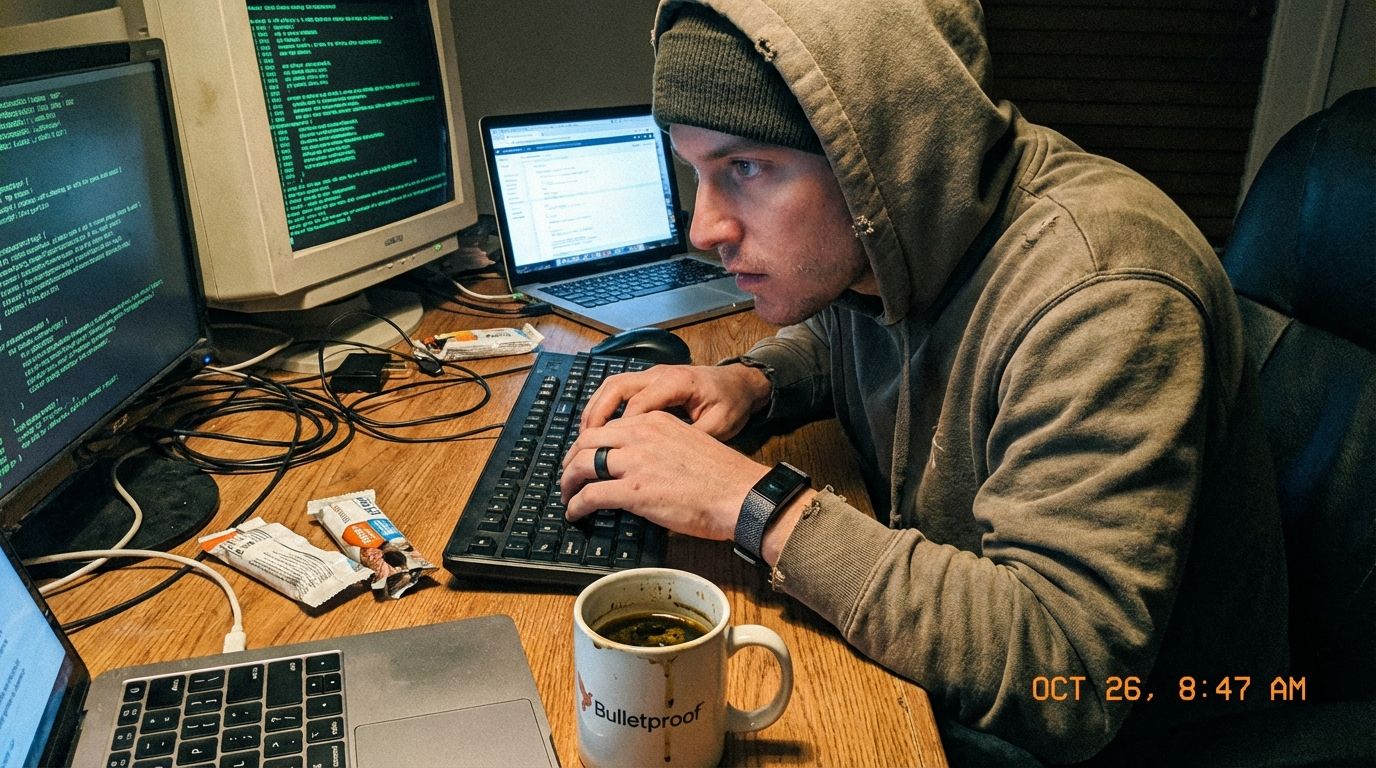Ever feel like your brain is running on dial-up while the rest of the world is zooming by on fiber? I know that feeling of lagging behind, struggling to find focus in a sea of distractions. I spent years trying to patch my own operating system with wearable biometric devices and enough caffeine to power a small server farm.
Then I discovered the world of extreme biohacking. It wasn’t just about drinking bulletproof coffee; it was about getting root access to my own biology.
From embedding subdermal microchips to editing bacterial genes in my kitchen, I’ve tested the protocols that actually work. Want to upgrade your hardware and optimize your software without crashing your system? I’m going to walk you through the exact steps I use, and I think you’ll be surprised at how accessible these upgrades can be.
Key Takeaways
Extreme Geek Biohacking uses tech like the Dangerous Things xSIID implant and The ODIN’s CRISPR kits to push physical limits.
Real-time Data drives decisions; tools like the Oura Ring Gen 3 and Whoop 4.0 track recovery, while Levels CGMs monitor metabolic health.
Community Labs like Genspace in NYC and Counter Culture Labs in Oakland provide access to $10,000+ equipment for a low monthly fee.
Protocols matter; Andrew Huberman’s 11-minute weekly cold plunge routine is the gold standard for boosting dopamine and immune markers.
Future Tech is here; Neuralink’s first patient Noland Arbaugh is already playing Civilization VI using only his mind.
Ethical Risks are real; privacy laws like the CCPA in the US struggle to keep up with biometric data collection and unsolicited email marketing from unregulated vendors.
Table of Contents
What is Extreme Geek Biohacking and Why Does It Matter?
Extreme geek biohacking is the intersection of biology and hacker culture. It is the belief that we don’t have to accept the default settings of our bodies. We can overclock our minds and upgrade our physical stats using science and technology.
What Does Extreme Biohacking Involve?
For me, it started with a simple question: “Can I run better?” Now, I have a tiny RFID chip sitting under the skin of my hand that opens my front door. I start my mornings with a precision-calibrated stack of nootropics, sometimes including metformin for longevity, right alongside my statins if my lipid profile demands it.
I tweak my environment constantly. I use blue light lamps in the morning to trigger cortisol and wakefulness, then switch to red-shifted lighting at night to protect my melatonin. It is a constant loop of testing and debugging.
Some days I fast for 16 hours to trigger autophagy, the body’s cellular cleanup process. Other days I’m deep in forums reading about Dave Asprey or analyzing my own genetic data.
I always tell my friends that I’m not trying to be a cyborg. I just want the same control over my health that I have over my web browser settings. It is personal, data-driven, and far more secure than the personally identifiable information floating around in some corporate database.
How Have Geek Biohacking Communities Grown?
The growth has been exponential. I watched DIY biology move from lonely subreddit threads to physical spaces. Places like BioCurious in Silicon Valley and Genspace in Brooklyn became hubs where coders and biologists swapped skills.
You can walk into these labs and find people 3D-printing prosthetic limbs or running gel electrophoresis on a Saturday night. It is open-source science in action. We share results on Discord and the web, avoiding the flashy advertisements of mainstream health sites.
We care about results, not hype. We debate the best opt-ins for health newsletters and how to keep our IP addresses private while researching gray-market supplements. It is a community built on shared curiosity and the drive to be better.
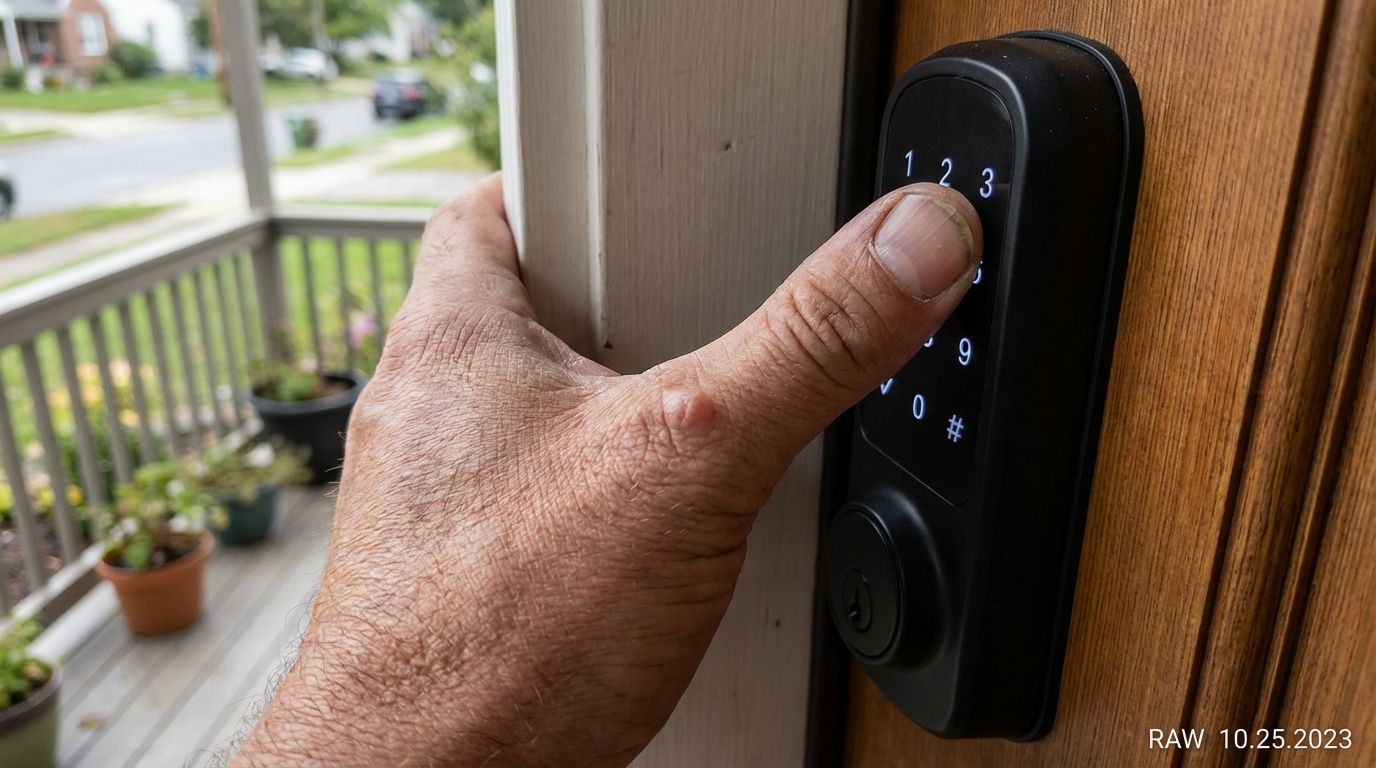
Key Technologies Driving Extreme Biohacking
If you think biohacking is just taking vitamins, think again. We are using tools that were once locked inside university labs.
How Does Genetic Engineering and CRISPR Work in Biohacking?
CRISPR acts like molecular scissors for DNA. It is the command-line editor for biology. The system uses a guide RNA to find a specific string of genetic code and the Cas9 enzyme to cut it.
For geeks like us, this means we can finally “patch” biological code. I bought a bacterial gene engineering kit from The ODIN, a company founded by biohacker Josiah Zayner. For about $169, I had everything I needed on my kitchen counter to modify bacteria to glow in the dark.
It was a surreal moment. I was holding a petri dish with an organism that I had genetically altered. It wasn’t dangerous, but it was powerful. It made the abstract concept of DNA real.
With great power comes great responsibility. This is a motto worth repeating when experimenting with anyone’s genetic code, or even just bacteria.
Of course, we have to be careful. There are risks of off-target effects, where the scissors cut the wrong line of code. That is why I stick to bacterial experiments and leave the human stuff to the pros. The ethical debates around things like human cloning benefits are fascinating, but I’m focused on practical, safe learning.
What Are Wearable Biometric Devices and How Are They Used?
I can’t edit my own genes yet, but I can monitor my system performance 24/7. Wearable biometric devices are my dashboard. I don’t just count steps; I track Heart Rate Variability (HRV), blood oxygen, and sleep stages.
When choosing a device, you need to know what you are optimizing for. Here is a breakdown of the two heavy hitters I’ve tested:

| Feature | Oura Ring Gen 3 | Whoop 4.0 |
|---|---|---|
| Best For | Sleep tracking & recovery | Strain & workout intensity |
| Battery Life | 4-7 days | 4-5 days |
| Cost (US) | ~$299 + $5.99/mo | ~$239/year (Subscription only) |
| Form Factor | Discreet ring | Fabric wrist strap |
I prefer the Oura because it is unobtrusive. I check my readiness score every morning. If my HRV is low, I know my nervous system is stressed, so I skip the heavy lift and do yoga instead. It uses gamification to keep me honest. I treat my recovery score like a high score I need to beat.
How Do Implantable Microchips Enhance Biohacking?
This is where things get really “cyberpunk.” I decided to get an RFID chip under the skin of my hand. I went with the xSIID from Dangerous Things. It has an NFC chip for storing data and a tiny LED that lights up when it scans.
I use it to unlock my phone and share my digital business card. It is a fun party trick, but it is also practical. I never worry about forgetting my keys because my hand is the key.
The installation was quick, similar to a piercing. There are risks like infection, so I went to a professional piercer who knew what they were doing. It makes me feel like I have a permanent upgrade, a small step toward merging with the machines we love.
How Is AI Used for Health Optimization?
I have gigabytes of data from my wearables, but I’m not a data scientist. That is where AI comes in. I use platforms like InsideTracker or Function Health that use algorithms to analyze my blood work and DNA.
These tools look at biomarkers like ferritin and cortisol, then tell me exactly what to eat to fix them. It is like having a debugger for my metabolism. If my iron is low, the AI suggests specific foods, not just “eat better.”
I also use AI to filter out the noise. I set up rules to block spam and email messages from snake-oil salesmen, ensuring my inbox only gets high-quality research. It keeps my mental bandwidth clear for what matters.
Popular Practices in Personal Transformation
I use biofeedback tools and specific protocols to tune my body. These aren’t just habits; they are system updates.
What Are the Benefits of Cold Therapy and Cryotherapy?
I used to hate the cold. Now, I jump into a 45-degree plunge tank three times a week. I follow the protocol from Andrew Huberman, a neuroscientist at Stanford. He recommends 11 minutes total per week, divided into a few sessions.
The shock of the cold releases a massive spike of dopamine and norepinephrine. It wakes me up more effectively than any espresso. My white blood cell counts have improved, and I rarely get sick.
It also activates brown fat, which increases calorie burn. I track my recovery with my Oura ring, and I can see my deep sleep numbers go up on the days I plunge. It is uncomfortable, but the data proves it works.
How Does Intermittent Fasting Support Metabolic Hacking?
Fasting is my way of defragmenting my hard drive. I usually stick to a 16:8 schedule, where I eat all my meals within an 8-hour window. This gives my body 16 hours to lower insulin and focus on repair.
I use a Continuous Glucose Monitor (CGM) from Levels to see exactly how food affects me. I found that oatmeal spikes my blood sugar like a candy bar, so I cut it out. Fasting helps fix insulin resistance and improves my focus.
When I’m in a fasted state, my mental clarity is laser-sharp. It feels like closing all the background tabs in a browser. My energy is stable, and I don’t get that post-lunch crash anymore.
Which Nootropics Improve Cognitive Performance?
We all want a “Limitless” pill. While that doesn’t exist, I have found stacks that help. I keep it simple and safe. My go-to is L-Theanine mixed with caffeine. The L-Theanine smooths out the jitters of the coffee, giving me a clean, calm focus.
I’ve also experimented with Creatine for cognitive fatigue and Lion’s Mane Mushroom for memory. I track everything. If I add a new supplement, I log it to see if my productivity metrics actually change.
You have to be careful with sources. I only buy from vendors who provide third-party lab tests. I don’t want to risk my health on a random powder I found through a sketchy email address or a pop-up ad.
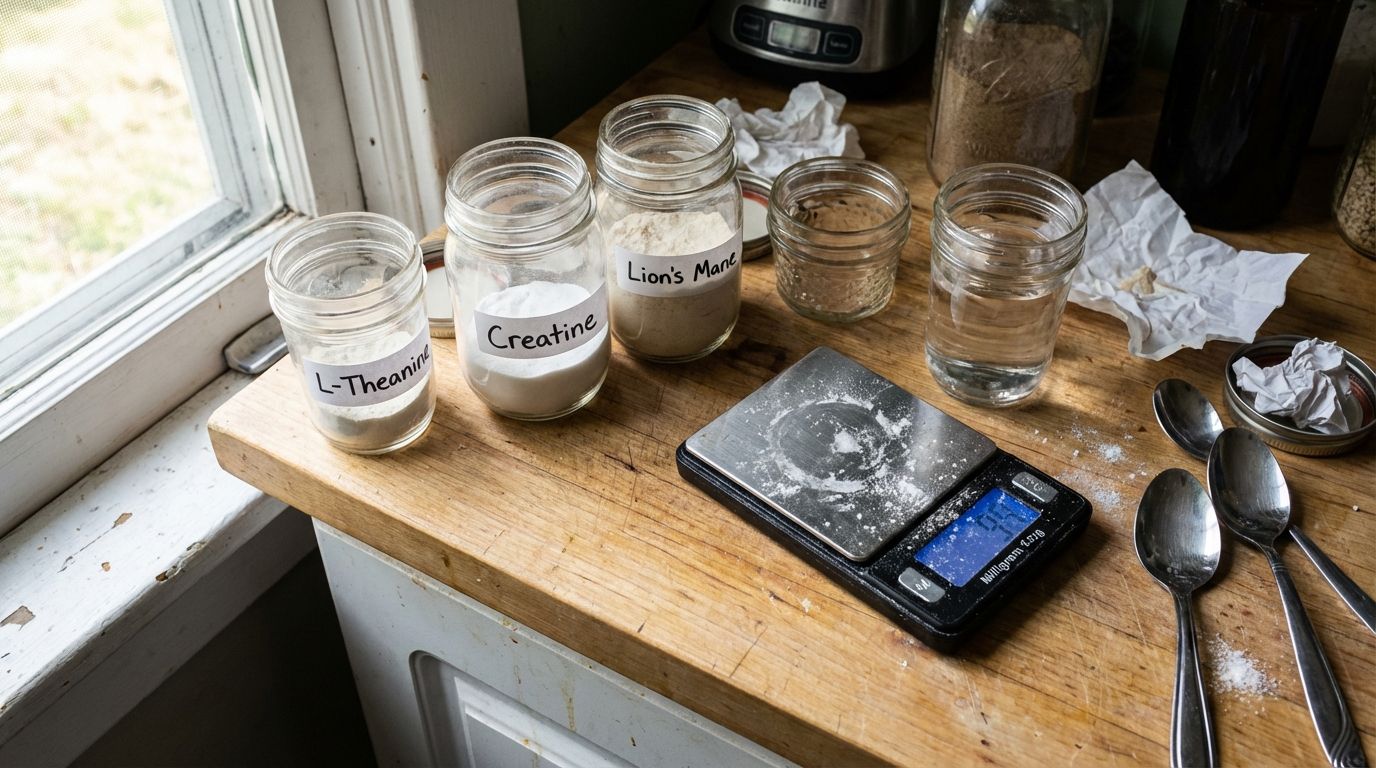
How Can Sleep Be Optimized for Better Health?
Sleep is the foundation. You can’t hack your way out of sleep deprivation. I treat my bedroom like a recovery chamber.
I use blue light blocking glasses from Ra Optics as soon as the sun goes down. Artificial light suppresses melatonin, the hormone that signals sleep. I also use the Eight Sleep Pod cover on my mattress to regulate my temperature. It cools down my side of the bed to 68 degrees, which helps me stay in deep sleep.
I taped over every standby light on my TV and chargers. My room is pitch black. My sleep tracker showed my “restfulness” score jumped 15% just by blocking those tiny LEDs. It is a low-tech hack with a high ROI.
How Is Data Used in Biohacking?
I don’t guess; I test. Data is the only way to know if a hack is working. I track everything from my network speed to my blood sugar.
What Is Continuous Health Monitoring?
Continuous health monitoring changed the game for me. Instead of getting a snapshot at the doctor’s office once a year, I get a movie of my health. I wear a CGM for a few weeks every quarter.
I watch my glucose react to stress, sleep, and food in real time. It was shocking to see how a bad night of sleep wrecked my blood sugar control the next day. This immediate feedback loop forces you to be honest with yourself.
If I eat a donut, the graph spikes. If I take a walk after dinner, the graph smooths out. It turns nutrition into an engineering problem that I can solve.
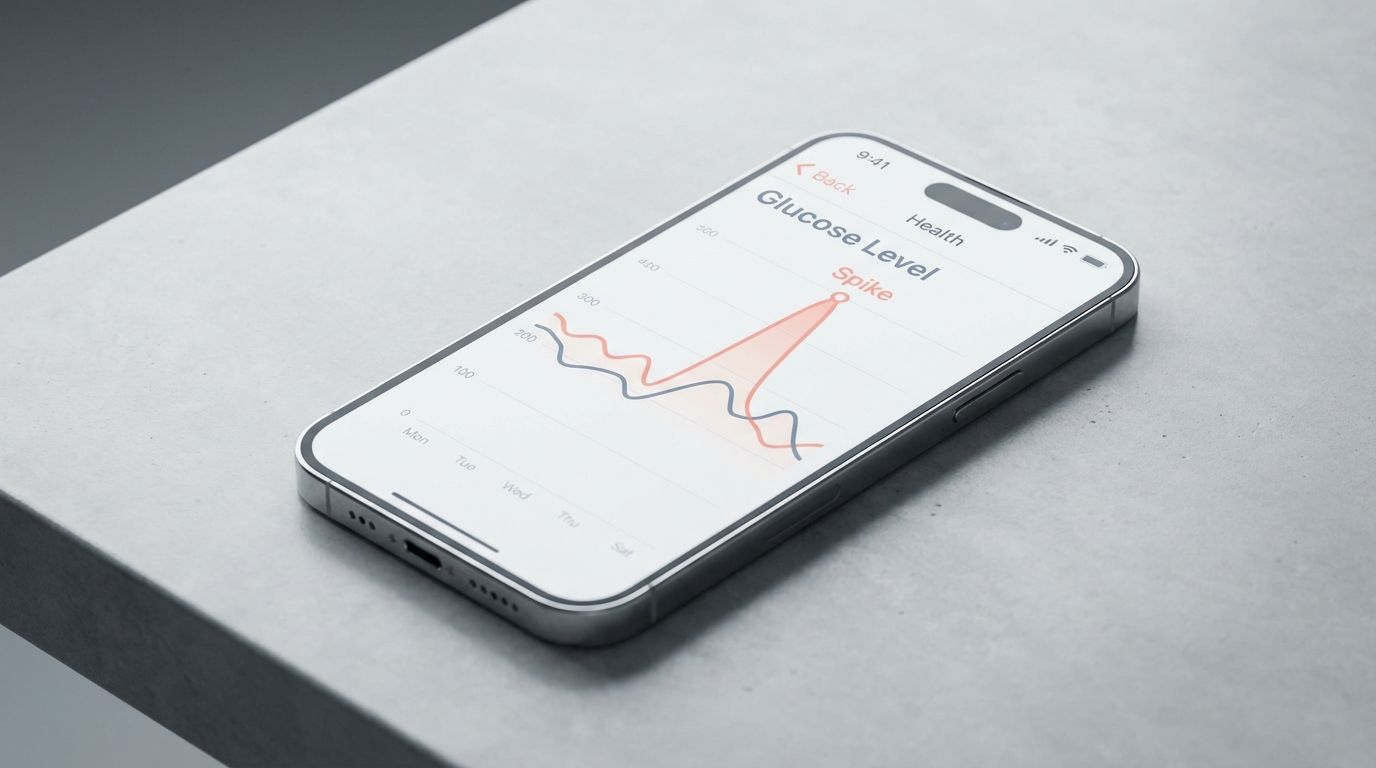
How Are Personalized Health Metrics Created?
I use services like Function Health to get comprehensive blood panels. For about $499 a year, they test over 100 biomarkers, way more than a standard physical. This creates a baseline for my personalized health metrics.
I upload this data to my secure dashboard. I can see my inflammation levels, hormone status, and nutrient deficiencies. It is my biological source code.
I realized I was deficient in Vitamin D despite living in a sunny place. I adjusted my supplementation, and my energy levels leveled up. Without the data, I would have just kept drinking more coffee, masking the real issue.
Why Is Data Accuracy Critical in Biohacking?
Garbage in, garbage out. If my sensors are wrong, my decisions are wrong. That is why I stick to validated devices. I cross-reference my Oura ring heart rate with a chest strap occasionally to ensure it is accurate.
I am wary of cheap knockoffs. I don’t trust my health data to a generic $20 band I found on a random website. I look for devices that have been used in clinical studies. Accuracy is worth paying for.
I also keep my own local backups of my data. Cloud services can go down, or terms of service can change. I want to own my health history, not just rent access to it.
Ethical Considerations in Biohacking
As we merge with tech, we have to talk about the risks. I worry about who owns my data and what happens if my biometric security is compromised.
What Privacy Concerns Exist Around Biometric Data?
Biometric data is permanent. You can change your password, but you can’t change your fingerprint or your DNA. I am very careful about where I share this information.
I read the privacy policy of every health app. I opt out of sharing my data for “research” unless I trust the entity. The 23andMe data breach was a wake-up call for everyone. Millions of data points were exposed.
I use privacy tools to mask my email address when signing up for new services. I block third party cookies on my browser. I treat my health data with the same security I treat my bank account.
What Risks Come from Unregulated Biohacking?
The DIY scene is amazing, but it is also the Wild West. I’ve seen people on forums suggest injecting homemade compounds. That is not biohacking; that is a Darwin Award waiting to happen.
Unregulated gene therapy is a major risk. Without proper safety checks, you could introduce a mutation or an infection. I stick to external hacks and safe, proven supplements. I don’t want to be the beta tester for a permanent biological patch.
I also see a lot of displaying advertising for “miracle cures” that are just rebranded caffeine pills. You have to be skeptical. If a claim sounds too good to be true and isn’t backed by a peer-reviewed paper, I scroll past.
How Can Biohacking Be More Accessible and Inclusive?
Right now, biohacking has a “rich guy” problem. Bryan Johnson’s Blueprint protocol costs millions. Most of us can’t afford that. But the community is fighting to change this.
Open-source projects and community labs lower the barrier to entry. You can join a lab like Counter Culture Labs for a small monthly fee and get access to $10,000 worth of equipment. We share knowledge freely.
I try to share low-cost hacks, like cold showers (free) and meditation (free). We need to make sure that biological upgrades don’t become just another way for the wealthy to leave everyone else behind. We want health equity, not just elite performance.
The Intersection of Biohacking and Spirituality
It sounds strange, but optimizing my biology led me to explore my consciousness. Once you clear the brain fog, you start asking bigger questions.
How Can Biohacking Help Explore Higher Consciousness?
I use technology to aid my meditation. I use a Muse headband that measures my brainwaves. It gives me real-time audio feedback—birds singing when I’m calm, storm sounds when I’m distracted.
This gamifies the process of finding stillness. It helped me understand what “focus” actually feels like in my brain. Some biohackers explore microdosing, but I stick to breathwork and neurofeedback. It is a safer way to explore the OS of the mind.
What Role Does Meditation Play in Personal Transformation?
Meditation is the ultimate stress management tool. It lowers my cortisol, which protects my testosterone levels. I do 10 minutes every morning using the Waking Up app by Sam Harris.
It helps me detach from the noise. When I get an annoying unsolicited email or a bug in my code, I can observe the frustration without reacting to it. It is emotional regulation training.
How Are Mind and Body Practices Integrated?
I realized that my physical state dictates my mental state. If I’m sleep-deprived, I can’t meditate well. If I’m inflamed from bad food, I’m anxious.
I combine yoga with my data tracking. I check my HRV before and after a session. Seeing the numbers improve reinforces the habit. It connects the spiritual practice to biological reality.

Notable Innovations Shaping the Future
The future is rushing at us fast. The stuff I’m reading about now feels like science fiction.
How Is Gene Editing Advancing Longevity?
Scientists are looking for the “aging” genes. Epigenetic reprogramming is the new frontier. It is the idea that we can reset the age of our cells.
I follow the work of the mission to conquer mortality closely. While we aren’t there yet, the potential to edit out genetic diseases before birth is on the horizon. It could mean the end of hereditary conditions that have plagued families for generations.
What Are Smart Implants and How Do They Provide Feedback?
My RFID chip is passive, but active implants are coming. Imagine a sensor that lives in your bloodstream and alerts your phone the second a cancer cell appears.
Researchers are developing “smart sutures” that monitor healing and “bio-integrated” sensors. These will give us a continuous stream of diagnostic data. It will be like having a check engine light for your body.
How Does Advanced AI Predict Health Outcomes?
AI is getting better at pattern recognition than any human doctor. It can scan an X-ray and spot a tumor that a radiologist might miss. I upload my data to AI health platforms that predict my risk factors for the next decade.
It tells me, “Based on your lipids and family history, you need to watch your saturated fat intake.” It is proactive, not reactive. It shifts the model from treating sickness to preserving wellness.
The Role of Community in Biohacking
I couldn’t do this alone. The community is where I verify my ideas and find support.
What Are DIY Biohacking Labs and Workshops?
These are our hackerspaces. They are safe environments where we can learn by doing.
- Genspace in NYC offers classes on CRISPR and synthetic biology.
- Counter Culture Labs in Oakland is a haven for mushroom hacking and open insulin projects.
- We pool our money to buy expensive centrifuges and microscopes.
- We teach each other safety protocols so no one gets hurt.
- We host workshops on everything from fermenting kombucha to extracting DNA from strawberries.
How Do Online Biohacking Forums Support Users?
Forums like the Biohack.me board and specific subreddits are my daily read. I go there to see real user reviews of new gadgets before I buy.
When I was researching my chip implant, I spent weeks reading installation stories on these forums. It helped me find a safe piercer and know what to expect during healing. We look out for each other, warning the group about scam sites or dangerous examples of forbidden science.
What Is Collaborative Experimentation in Biohacking?
We run “n=1” experiments, but we share the data to make it “n=many.” If 50 of us try a new sleep protocol and share our Oura stats, we can see if it actually works.
This citizen science pushes the field forward faster than traditional clinical trials. We are agile. We iterate. We are the research and development department for the future of human health.
Challenges Facing the Biohacking Movement
It isn’t all smooth sailing. We face legal gray areas and skepticism.
What Regulatory Issues Affect Biohacking?
The FDA moves slowly; we move fast. This creates friction. Selling a DIY gene therapy kit can get you in trouble. I always check the legal status of any compound or device I order.
I stick to tools that are legal for “research purposes” or generally wellness-focused. I don’t want to get my gear seized at customs. Navigating these rules is part of the game.
Why Is There Skepticism from Traditional Medicine?
Doctors are trained to follow protocols, not to experiment. When I show up with a spreadsheet of my own data, some doctors roll their eyes. They worry about safety, which is fair.
But I’ve found that if I present the data clearly and ask informed questions, most cardiologists and GPs will engage with me. I frame it as being an engaged patient, not a rogue operator.
How Can Biohackers Manage Risks and Failures?
I have failed many times. I’ve tried diets that made me foggy and supplements that did nothing. The key is to fail fast and safe.
I never change more than one variable at a time. If I start a new vitamin, I don’t also change my workout routine. That way, if something goes wrong, I know what caused it. I listen to my body first, data second.
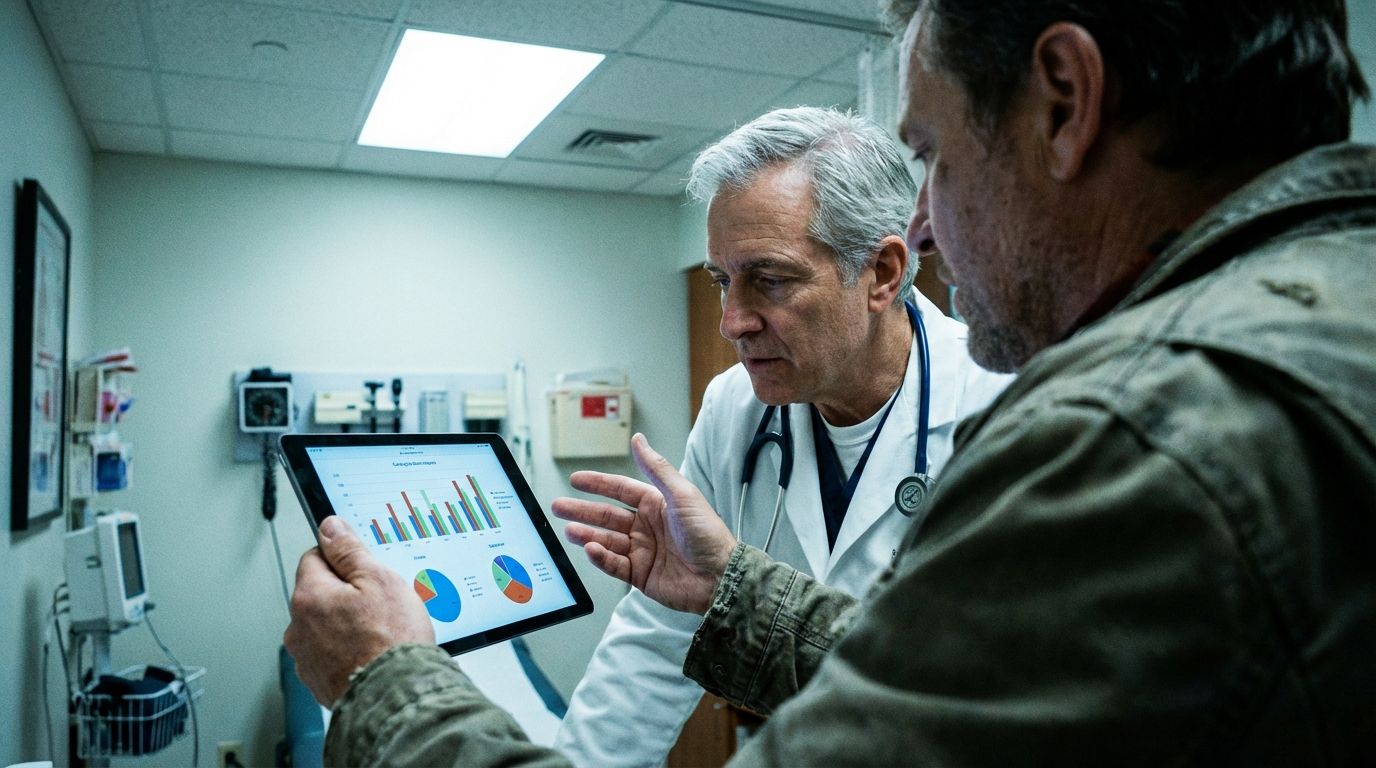
How to Get Started with Biohacking
Ready to log in? You don’t need a microchip to start. Here is how I would reboot my system if I were starting today.
How Should You Set Personal Biohacking Goals?
Don’t try to fix everything at once. Pick one metric. Do you want better sleep? More focus? Higher energy?
I started with sleep because it affects everything else. I set a goal to get my deep sleep up to 90 minutes a night. Having a clear, quantifiable target kept me focused.
What Tools and Practices Should Beginners Choose?
Start with the basics that have the highest return on investment.
- Sleep Tracker: Get an Oura Ring or just use the Sleep Cycle app on your phone.
- Blue Light Control: Buy a pair of amber glasses for the evening.
- Fasting App: Download Zero to track your eating windows.
- Basic Blood Panel: Ask your doctor for a comprehensive metabolic panel to establish a baseline.
- Cold Shower: Turn the knob to cold for the last 30 seconds of your shower. It’s free and effective.
How Do You Monitor Progress and Adjust Strategies?
Review your data weekly. Sunday night is my review time. I look at my sleep scores and my activity levels.
If a number is trending down, I ask “Why?” Did I drink alcohol? did I stay up late? I adjust my behavior for the next week. It is a continuous loop of optimization.
The Future of Extreme Geek Biohacking
We are just getting started. The tools are getting cheaper, smaller, and smarter.
How Will Biohacking Integrate with Mainstream Medicine?
I believe biohacking tools will become standard medical equipment. Your doctor will prescribe a ring instead of a pill. They will want to see your Apple Watch data before they diagnose you.
Insurance companies might even offer lower premiums if you share your verified health data. It raises privacy questions, but the incentives are there.
What Role Will Big Tech Play in Biohacking Advances?
Apple, Google, and Samsung are going all-in on health. They are turning our phones into medical devices. Neuralink is pushing the boundary of brain-computer interfaces.
I watch these companies closely. They have the resources to solve hard engineering problems. I’m excited to see what happens when the massive processing power of cloud computing meets the complexity of human biology.
What Transformations Are Expected in the Next Decade?
I expect we will see “digital twins”—virtual models of our biology that we can test drugs on before we take them. We might have smart contact lenses that display our glucose levels in our field of view.
The line between “wearable” and “implantable” will blur. We are moving toward a world where technology isn’t just something we use; it’s something we are.
How Will Extreme Geek Biohacking Evolve in 2025?
By the end of 2025, I expect AI to be the dominant force. My health dashboard won’t just show graphs; it will give me a daily plan generated by an AI that knows my genetics, my sleep last night, and my schedule for today.
We will see more people like Noland Arbaugh using brain interfaces for daily tasks. The “extreme” hacks of today, like ice baths and CGMs, will be the morning routine of the average person tomorrow. As geeks, we are just the early adopters, debugging the future for everyone else.
So, are you ready to upgrade? The only thing holding you back is your current programming.
People Also Ask
What is extreme geek biohacking, and how can it help me level up?
Extreme geek biohacking is basically running a debugging script on your own biology to fix energy leaks and overclock your performance. I use data from tools like the Oura Ring to tweak my daily habits until I hit my peak cognitive state.
Which critical ways stand out in the top 10 methods for leveling up through biohacking?
My top strategies include tracking Heart Rate Variability (HRV) to gauge recovery and using the 11-minute weekly cold plunge protocol popularized by Dr. Andrew Huberman. I also swear by stacking specific nootropics like Creatine and L-Theanine to sharpen my daily focus.
Is extreme geek biohacking safe if I try these strategies at home?
While simple hacks like blue-light blocking glasses are low-risk, I never start a heavy supplement regimen without looking at my blood work first. I treat my body like a production server and avoid pushing updates without verifying stability.
Can anyone use these 10 critical ways or do I need special gear?
You can start immediately with free tools like the f.lux software to manage screen lighting or simple intermittent fasting windows to reset your metabolism.
References
https://www.medicalnewstoday.com/articles/biohacking
https://pmc.ncbi.nlm.nih.gov/articles/PMC6549016/
https://www.sciencedirect.com/science/article/am/pii/S0040162520310325
https://pmc.ncbi.nlm.nih.gov/articles/PMC5319660/
https://pmc.ncbi.nlm.nih.gov/articles/PMC11165804/
https://pmc.ncbi.nlm.nih.gov/articles/PMC12538154/
https://www.sciencedirect.com/science/article/pii/S2405844020307763
https://www.coherentmarketinsights.com/blog/the-role-of-artificial-intelligence-in-the-biohacking-industry-1472 (2025-02-27)
https://healthopenresearch.org/articles/6-2
https://www.mdpi.com/2076-3417/14/15/6701
https://www.americanwellnesspharmacy.com/news/bio-hacking-to-optimizing-health/ (2025-11-13)
https://www.insidetracker.com/a/articles/what-is-biohacking (2024-06-14)
https://pmc.ncbi.nlm.nih.gov/articles/PMC5816334/
https://www.tandfonline.com/doi/full/10.1080/01639625.2021.1976606
https://jeanfallacara.com/biohacking-and-meditation-two-sides-of-the-same-coin/
https://www.researchgate.net/publication/381853205_YOGA_AND_BIOHACKING_A_COMPREHENSIVE_OVERVIEW
https://pmc.ncbi.nlm.nih.gov/articles/PMC5524257/
https://www.researchgate.net/publication/397330394_Smart_Implants_for_Reconstructive_Feedback
https://www.sciencedirect.com/science/article/pii/S1871678423000031
https://pmc.ncbi.nlm.nih.gov/articles/PMC11702416/
https://pmc.ncbi.nlm.nih.gov/articles/PMC12398421/
https://www.orfonline.org/expert-speak/biohacking-and-regulations-the-evolving-landscape-of-human-enhancement (2023-09-18)
https://pmc.ncbi.nlm.nih.gov/articles/PMC7004414/
https://www.betterwayhealth.com/blogs/beta-glucan/biohacking-for-beginners
https://medicalfuturist.com/the-current-state-and-future-of-biohacking
https://www.researchgate.net/publication/350250543_10_Biohacking_Playing_with_technology (2025-10-26)
https://pmc.ncbi.nlm.nih.gov/articles/PMC11274085/
https://globalwellnessinstitute.org/wp-content/uploads/2018/06/Wellness-2030.pdf
https://hebe-wellness.com/blogs/news/biohacking-2025?srsltid=AfmBOoqkdgswLxNHvFMJqhA0jMd26C1eCxJh_Cb7-YVKSXbQmXyst1B6 (2025-01-26)
